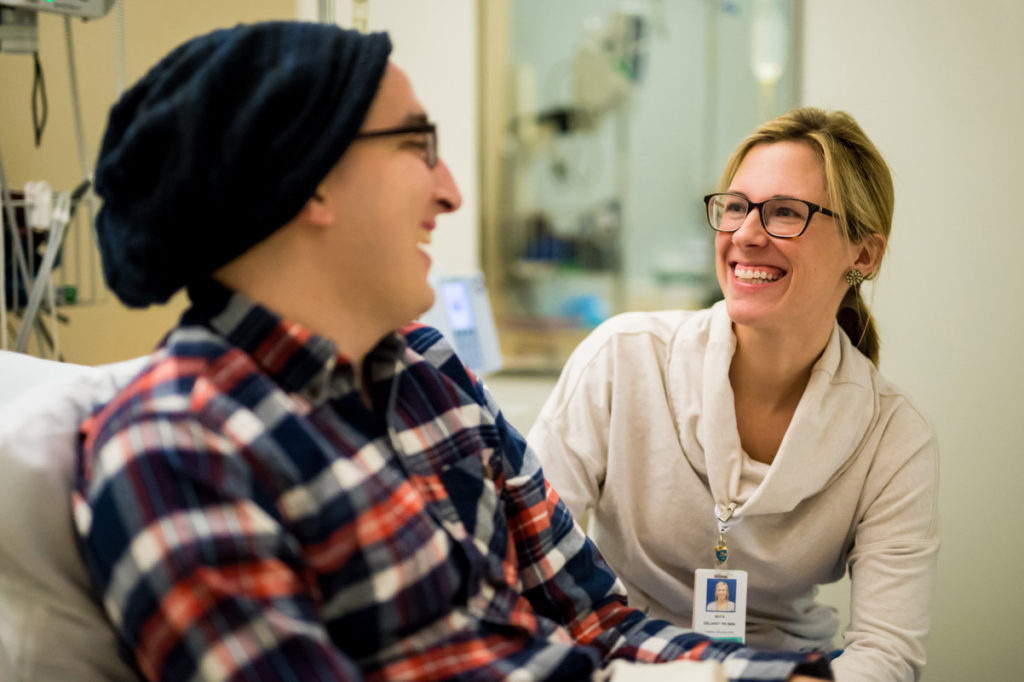Like bears that hibernate from the cold in winter, cancer cells go dormant to protect themselves from stressors, such as cancer therapy drugs. But at the Massachusetts General Hospital Cancer Center, researcher Mo Motamedi, PhD, is developing an innovative new way to force cancer cells out of dormancy, re-sensitizing them to chemotherapy.
Dr. Motamedi finds inspiration for his trailblazing work in his own mother’s courageous life and her final struggle with pancreatic cancer.
Dr. Motamedi is a leading molecular biologist at the Mass General Center for Cancer Research. His trailblazing work is inspired by experience — his own mother’s courageous life and her final struggle with pancreatic cancer.
The Center for Cancer Research, often called “the scientific engine of discovery” by Daniel A. Haber, MD, PhD, director of the Mass General Cancer Center, is an incubator for basic science that seeks to explain how cancer cells work.
Dr. Motamedi believes increased philanthropic support for basic research into cell biology is critical. Such work feeds the pipeline of discovery for new treatments and has the potential to reshape the future of cancer care. “Basic science paves the way for all of medical science,” Dr. Motamedi explains.
Building Blocks for Cancer Therapy
Building on a series of discoveries Dr. Motamedi and his team made over the past five years, they are now working to make the leap from laboratory science to cancer treatment in humans. They have developed a way to wake cancer cells out of a dormant state so they will be vulnerable to cancer drugs and radiation therapy.
Leaning forward with enthusiasm, Dr. Motamedi explains how his work rests on a fundamental ability of all living things — from bears to bacteria — to enter dormancy when under stress such as extreme heat, cold, lack of food or toxic substances. Because this ability is so universal, blocking it could help treat many different kinds of cancer. That’s different from much of today’s cancer research which is highly specific, focusing on gene mutations in certain types of cancer.

“Mo Motamedi has a belly full of passion for his work, which looks at cancer from a very different perspective,” says David Ryan, MD, chief of the Division of Hematology Oncology and clinical director of the Mass General Cancer Center.
A New Target
Dr. Motamedi and his team use fission yeast — a single-celled fungus that shares some remarkable similarities to the human cell — as a model to uncover basic principles about how cells develop a molecular memory system called epigenetics.
Working with yeast, they identified a group of proteins which act as a switch for establishing dormancy in response to long-term stress. This switch turns on pathways critical for the survival of dormant cells. It also turns off pathways which help cells preserve energy while in hibernation.
Because many of these proteins are also found in human cells, Dr. Motamedi and his team asked whether the same proteins are essential for the survival of resistant cancer cells. Their results supported this idea. They discovered an exciting and targetable vulnerability for killing dormant cancer cells. They are now pursuing these molecular targets in cancer cells in collaboration with several labs at the Mass General Cancer Center.
Knock Out Proteins
Key to this method — being tested in mouse models and in human cells in the laboratory — is a naturally occurring compound which specifically inhibits the group of proteins, also known as enzymes, critical for cells to establish dormancy.
“If you can inhibit cancer cells from going dormant or nudge them out of their dormancy, they can respond to chemo and radiation.”
“Now we have a way to knock out these proteins,” Dr. Motamedi says. “We have an enzyme inhibitor that can treat chemo-resistant cancer cells and convert them into chemo-sensitive cells. The cancer becomes sensitized to chemotherapy.”
The goal is to eventually use the enzyme inhibitor in humans who have cancer that is resistant to treatment or that is likely to become resistant.
“If you can inhibit cancer cells from going dormant or nudge them out of their dormancy, they can respond to chemo and radiation,” Dr. Ryan says.
The enzyme inhibitor is entering the testing stage in laboratory animals for cancers of the lung, brain, skin and pancreas. Philanthropic support can accelerate this work and make this promising cancer therapy available sooner.
A Personal Goal
Pancreatic cancer, one of the deadliest forms of cancer, is very likely to respond to the enzyme inhibitor, Dr. Motamedi says.
But he has a deeper reason to work on a cure for pancreatic cancer. In 2010, when leaving his position as a post-doctoral fellow at Harvard Medical School to start his own laboratory, his mother was diagnosed with pancreatic cancer in Vancouver, Canada.

It hit him hard. His mother had sacrificed everything in the 1980s by leaving their home country of Iran, with her two sons, during the turbulent years after the Iranian revolution. Separated from family, they have never been able to return.
Dr. Motamedi brought his mother for treatment to the Mass General Cancer Center, where he had been offered an opportunity to run his own research lab. As her condition worsened, “I told them I had to go home to Vancouver to take care of her and they said they would hold the position for me — that kind of loyalty is worth everything.”
Caring for his mother and searching for treatments through her long, and ultimately fatal illness, deepened his commitment to cancer research.
His ongoing work stands as a tribute his mother. “She did everything for us,” Dr. Motamedi says. “I still haven’t stopped fighting.”
For more information about basic cancer research, or to make a donation, please contact us.






